Key Points and Summary – Boeing’s X-32B, the Joint Strike Fighter contender that lost to Lockheed Martin’s X-35 (now the F-35), survives in just two museum airframes: one indoors at the USAF Museum and one outdoors at the Patuxent River Naval Air Museum, where weather is taking a toll.
–National Security Journal went out to see this X-32 and has included original images to show the condition of the stealth fighter. To compare, we have also included a photo from our July 2025 visit to the U.S. Air Force Museum to see the other X-32.
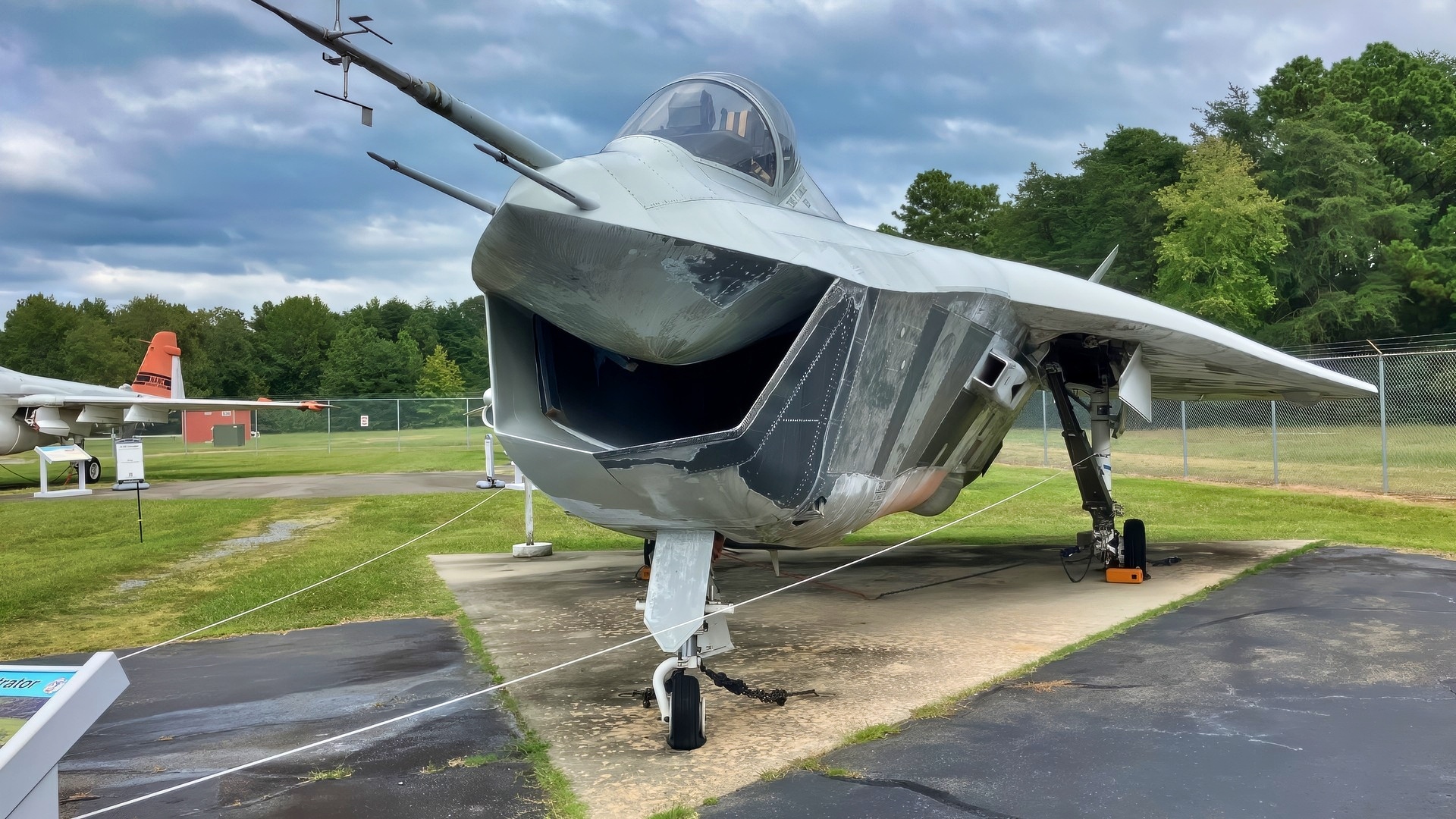
Boeing X-32 in Maryland, NSJ, Image, September 2025. Image by Christian D. Orr.
-The X-32B flew 78 sorties but fell short due to STOVL heat-recirculation issues, the stealth-unfriendly chin intake, and delta-wing pitch limits that complicated carrier work.
-A longtime PRNAM docent describes ongoing repaint hurdles and a need for volunteers to slow the decay.
-As Boeing celebrates its F-47 NGAD win, the X-32 stands as a fragile, teachable “what-if.”
Boeing’s X-32B: The JSF Runner-Up That’s Fading in the Sun
Boeing’s X-32 is one of the intriguing “What if” stories of the first decade of the post-Cold War era.
Designed as Boeing’s entry into the US military’s Joint Strike Fighter (JSF) program competition of the mid-1990s through the early 2000s. The airframe wound up losing out to what we now know as the F-35 Lightning II, thus giving Lockheed Martin’s famed Skunk Works division a one-two punch in operational 5th-generation stealth fighter bragging rights (the first of those proverbial punches being the F-22 Raptor, of course).
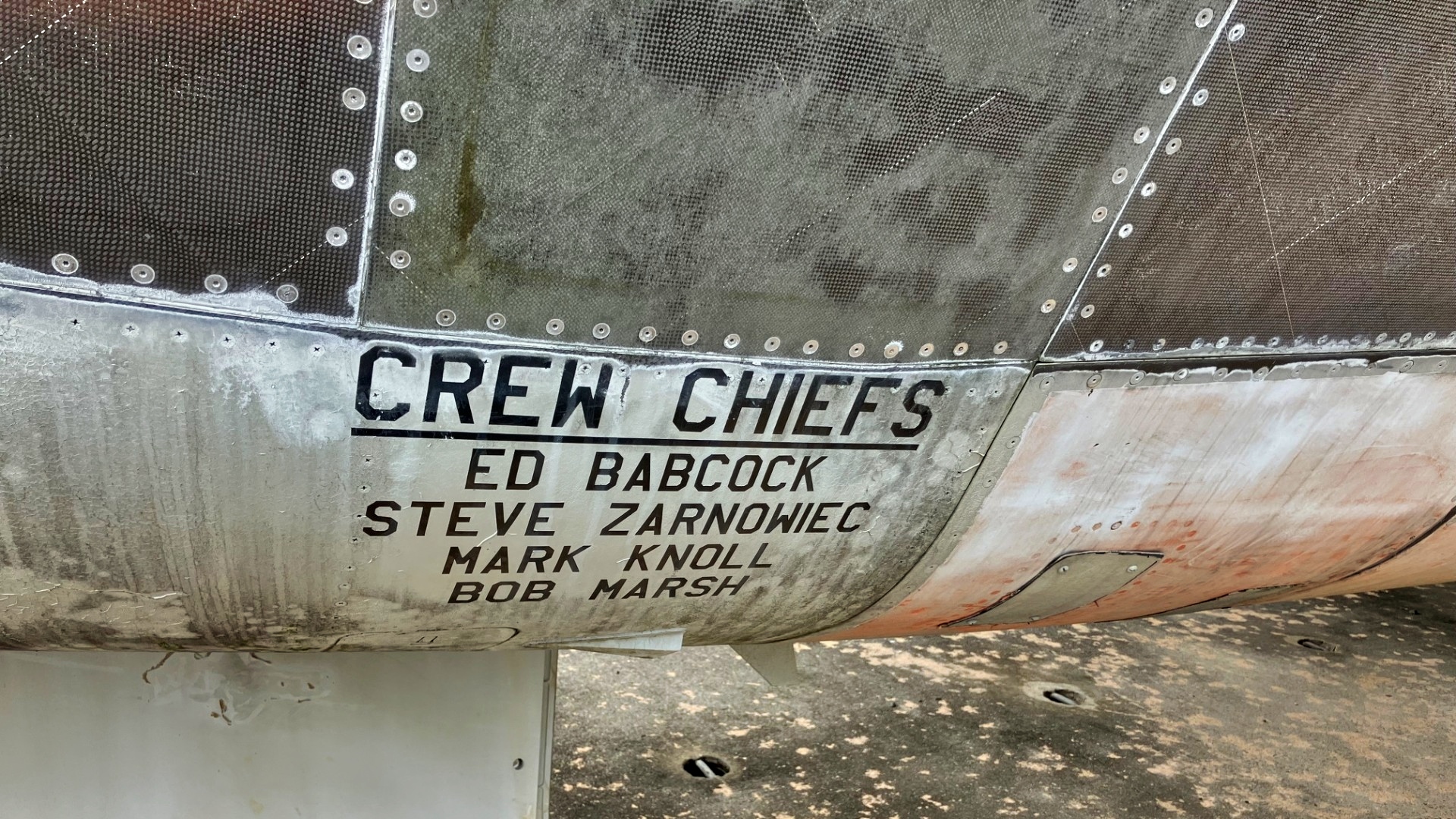
Boeing X-32 NSJ Original Image. Credit: Christian D. Orr.
The X-32 became relegated to mere museum curio status, with the first prototype being housed at the Research & Development (R&D) gallery of the National Museum of the United States Air Force at Wright-Patterson AFB in the vicinity of Dayton, Ohio. The second specimen sits at the Patuxent River Naval Air Museum (PRNAM) adjacent to NAS Patuxent River in St. Mary’s County, Maryland. Alas, as we’ve previously reported, the second airframe is reportedly suffering from severe deterioration due to exposure to the elements of Mother Nature, as it’s an outdoor display.
Recently, this NSJ reporter had the honor and privilege of visiting PRNAM and seeing that decay up close and personal (which you dear readers will be able to see for yourselves in the photos taken for this article; after all, “A picture is worth a thousand words”).
PRNAM Basics
PRNAM is located in Lexington Park, Maryland, approximately 64 miles from Annapolis and 88 miles from Baltimore. The facilities are closed on Mondays.
PRNAM X-32B Exhibit Basics
As noted by the museum display’s info screen, “The sole X-32B, our aircraft first flew on 29 March 2001. It was never assigned a Navy Bureau Number. After initial testing at Edwards AFB, the aircraft moved to NAS Patuxent River, where it participated in JSF flight trials between May and July 2001. In March 2005, the X-32B was transferred to PRNAM. The demonstrator had flown 78 flights and logged 43 flight hours.”
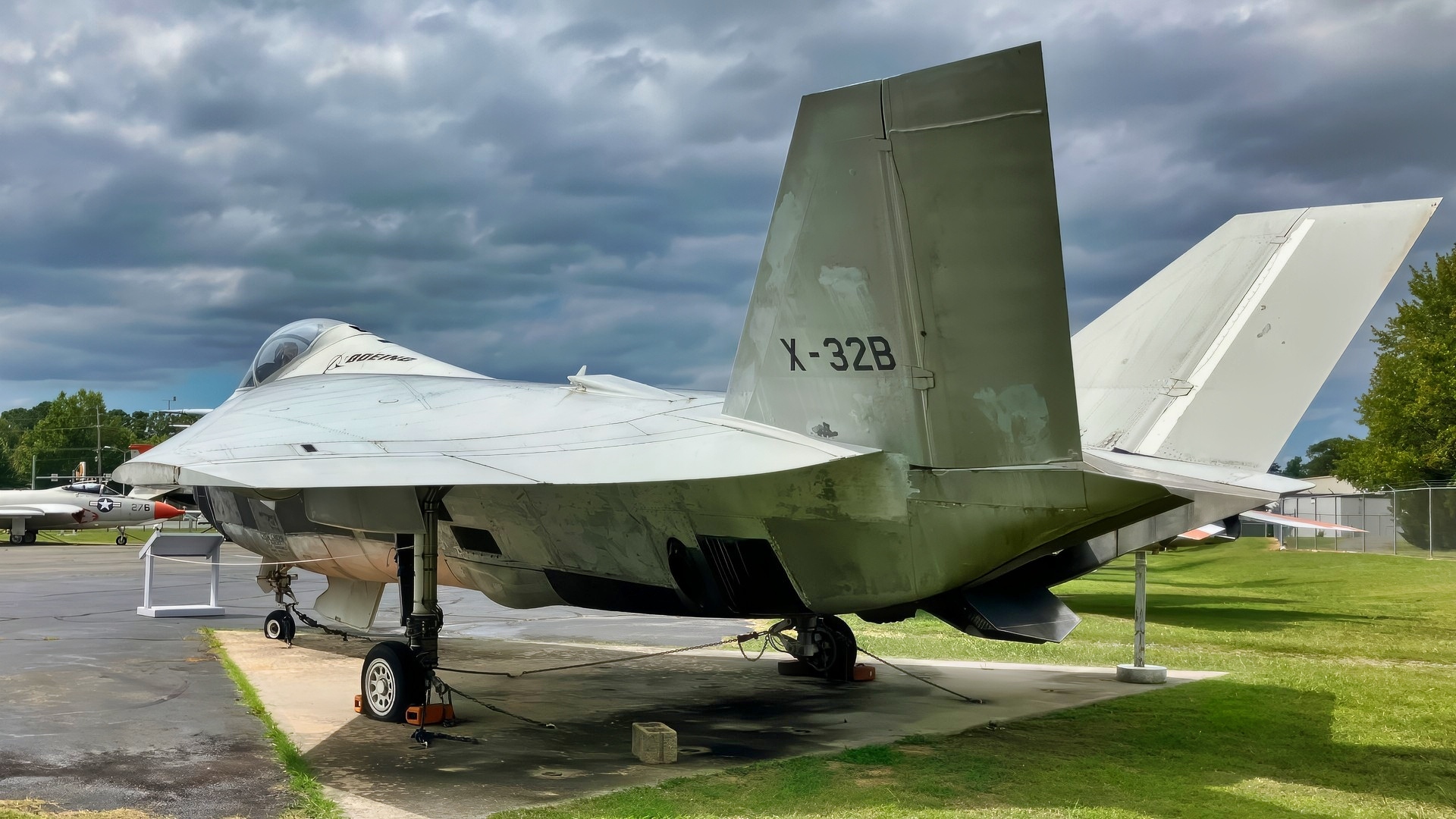
Boeing X-32 Stealth Fighter in Maryland. Image Credit: National Security Journal.
The X-32B’s tech specs and vital stats include a fuselage length of 43.7 feet, a wingspan of 30.0 feet, a maximum gross weight of 50,000 lb., a powerplant consisting of a single Pratt & Whitney F119 turbofan engine, and a max airspeed of Mach 1.4+.
JSF Program History Basics
The raison d’être behind the JSF program was to develop a stealth-enabled, lighter-weight fighter and attack aircraft design that also had vertical/short takeoff-and-landing (V/STOL) capabilities. In other words, a jack-of-all-trades that would complement and eventually replace the US Air Force’s F-16 Fighting Falcon, the US Navy’s F/A-18 Hornet, and the US Marine Corps’ AV-8B Harrier II, with the added bonus of stealth technology to boot.
The JSF program traced its roots back to 1993, when the Defense Advanced Research Projects Agency (DARPA) launched the Common Affordable Lightweight Fighter project (CALF); CALF was merged with the Joint Advanced Strike Technology (JAST) program in 1994, and in 1995, the merged venture was renamed the Joint Strike Fighter (JSF) program.
Accordingly, Boeing submitted the X-32A variant—which made its maiden flight on 18 September 2000—as the Air Force candidate and the X-32B for Navy and Marine Corps consideration. So why did it lose out to what was known at the time as the X-35? Mainly because of the following shortcomings:
-First and foremost was the core of the X-32B variant’s short takeoff and vertical landing (STOVL) system. It caused hot air from the plane’s exhaust to be recirculated into its modified intake, weakening the thrust it could produce and leading to overheating issues.
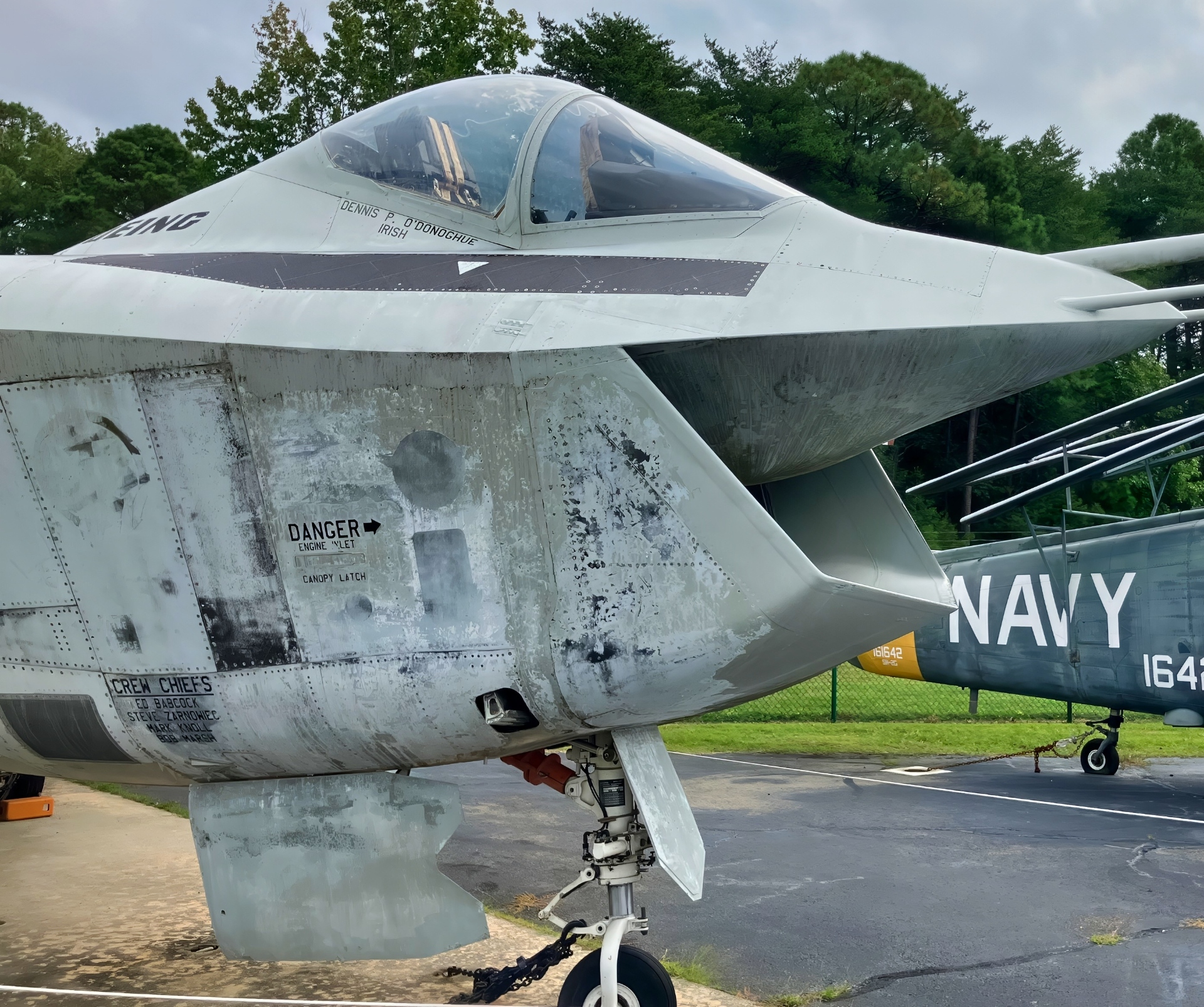
Side view of Boeing X-32B in Maryland—National Security Journal Image by Christian D. Orr.
-The plane’s massive chin intake and overall geometry made radar signature management a rather dicey proposition, as direct visibility of the compressor blades enlarged the airplane’s radar cross-section, thus compromising its stealth invisibility to radar
-The warbird had a delta wing design, whose lack of horizontal tail surfaces restricted pitch authority, thus diminishing agility and complicating approaches for aircraft carrier landings.
Thus it came to pass that the F-35A, F-35B, and F-35C now serve in the USAF, USMC, and USN, respectively. (By contrast, the F-22, which sprang forth from the Advanced Tactical Fighter [ATF] program, is strictly a USAF asset.) Fittingly enough, PRNAM also has an X-35C static display; unlike the X-32B, the museum’s F-35 is housed indoors, which unwittingly serves as a symbolic gesture of Lockheed Martin’s triumph over Boeing in the JSF race.
A Museum Docent’s Perspectives
One of the museum’s docents, Mr. Bill Russell (no relation to the famous former Major League Baseball player or the player of the same name ), a proud University of Maryland Terrapins alum (for both undergrad and grad school) who has been volunteering at the museum for 35 years, was nice enough to agree to an interview with this NSJ reporter about the museum’s X-32 exhibit.
Mr. Russell began his remarks by saying, “Actually, we have one of them, and they have another one at Wright-Patterson, which I understand is quite a bit cleaner-looking (see below)…They had to repaint it because the [original] paint [job] got pretty much damaged, I guess, when they were doing the testing;” as to why the plane lost the JSF competition to the F-35, “it’s because they’re so daggone ugly!”
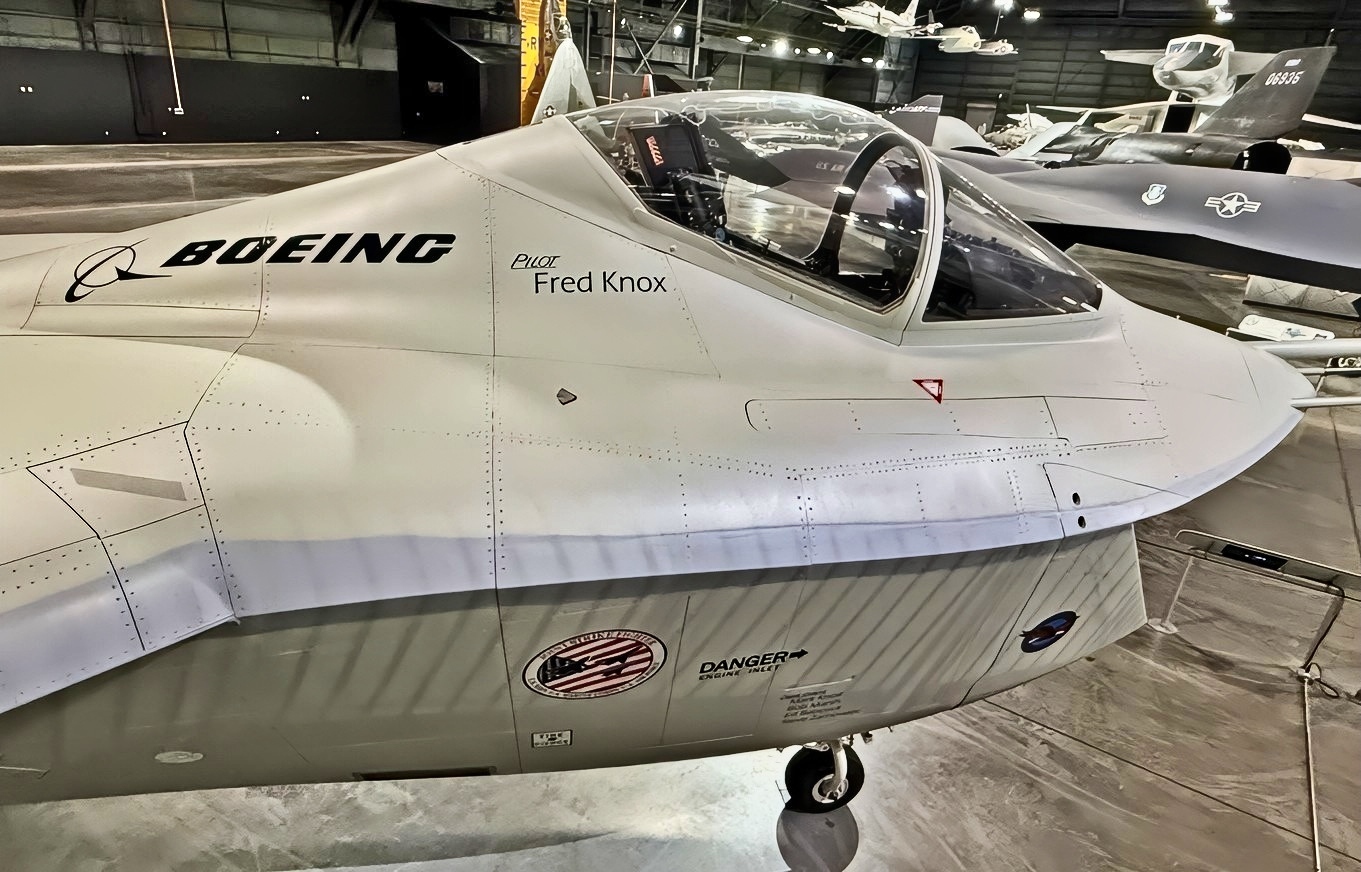
Boeing X-32 JSF. Original Photo Taken By National Security Journal Editor Harry J. Kazianis.
As for the aforementioned decay of the airframe, Bill lamented the lack of available volunteers to help provide the necessary upkeep and maintenance. He added regarding the fading paint job that “to paint something like this, you have to take it to the Navy base…they have a paint shop, you can’t just spray-paint outside, obviously. That’s what they have to do, and that’s why it just takes so long to get it done, because it’s almost ready to be painted, I mean, they’re still sanding down some of the surfaces.”
Personal Perspectives On X-32B
The signs of wear & tear, particularly the fading paint, are particularly noticeable on the lower half of the X-32B’s fuselage.
It’s a tad depressing to see such deterioration, since, as already noted, only two of these aircraft were ever built.
This reporter and lifelong military aviation history buffs has been to his fair share of aviation museums, from the Smithsonian’s National Air and Space Museum (both the main branch in Washington, DC, and the Steven F. Udvar-Hazy Center in Chantilly, Virginia) to the National Naval Aviation Museum in Pensacola, Florida to the RAF Museum in the Hendon section of London to the Proud Bird restaurant and mini-museum near LAX in Los Angeles, California. Ergo, I can attest that indoor museum displays tend to look much more pristine, since the planes are obviously much better protected from the elements, making preservation a far less daunting prospect.
When it comes to outdoor museums, it’s one thing when you’re displaying vintage aircraft in a relatively dry (as in non-humid) climate that gets relatively little rainfall and no snow to speak of, i.e., sunny Southern California. It’s quite another thing when you have a museum like PRNAM that’s in a region that (1) is far more humid and (2) truly gets all four seasons and all the weather maladies.
Moreover, I have friends and professional acquaintances who work in vintage aircraft restoration & preservation. I’ve indeed ridden in a couple of restored World War II bombers (namely a B-17 Flying Fortress and a B-25 Mitchell, AKA PBJ) thanks to the fine folks at Commemorative Air Force (CAF). I can vouch that such restoration projects are an arduous labor of love that requires a lot of dedication, manpower, and long hours.
Hopefully, PRNAM will be able to recruit the necessary number of people willing and able to work in those hours. If any of our dear readers happen to live within reasonable commuting distance of the museum and would like to volunteer, please click HERE.)
Postscript on X-32B
If it’s any consolation to Boeing regarding the star-crossed X-32, at least now they’re finally getting to one-up Lockheed Martin via the 6th Generation F-47 NGAD contract award from the US Air Force. And possibly a twofer, as they’re the current frontrunner for the US Navy’s own 6th Generation fighter project, the F/A-XX.
About the Author: Christian D. Orr, Defense Expert
Christian D. Orr is a Senior Defense Editor. He is a former Air Force Security Forces officer, Federal law enforcement officer, and private military contractor (with assignments worked in Iraq, the United Arab Emirates, Kosovo, Japan, Germany, and the Pentagon). Chris holds a B.A. in International Relations from the University of Southern California (USC) and an M.A. in Intelligence Studies (concentration in Terrorism Studies) from American Military University (AMU).
More Military
The B-1B Lancer Bomber Can Come Back ‘From the Dead’ Thanks to the Boneyard
F-15EX Eagle II vs. China Brand New J-35 Fighter: Who Wins a Fight?
The B-21 Raider Has a New Enemy You Likely Never Heard Of
The Navy’s Biggest Nightmare: The Aircraft Carrier Is Obsolete


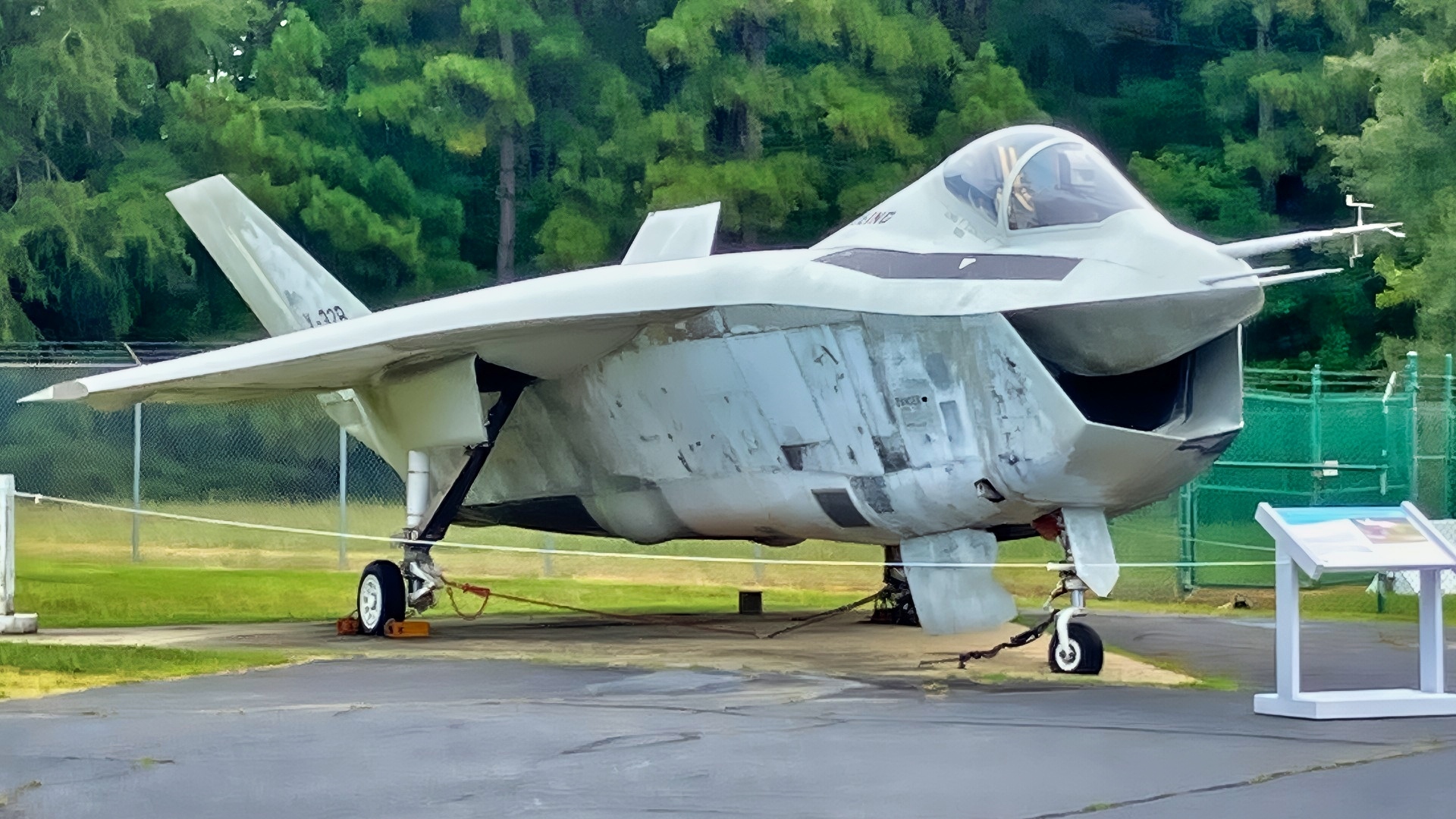








Ed
September 15, 2025 at 6:42 pm
No it doesn’t. It’s ugly.
Bilbo Baggins
September 20, 2025 at 11:01 pm
He’s such a happy little fella. He deserves better than this.